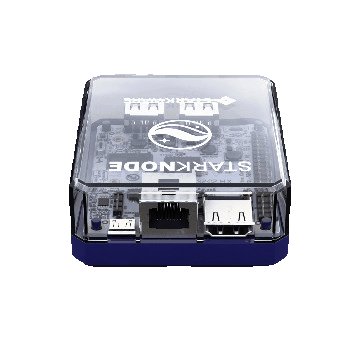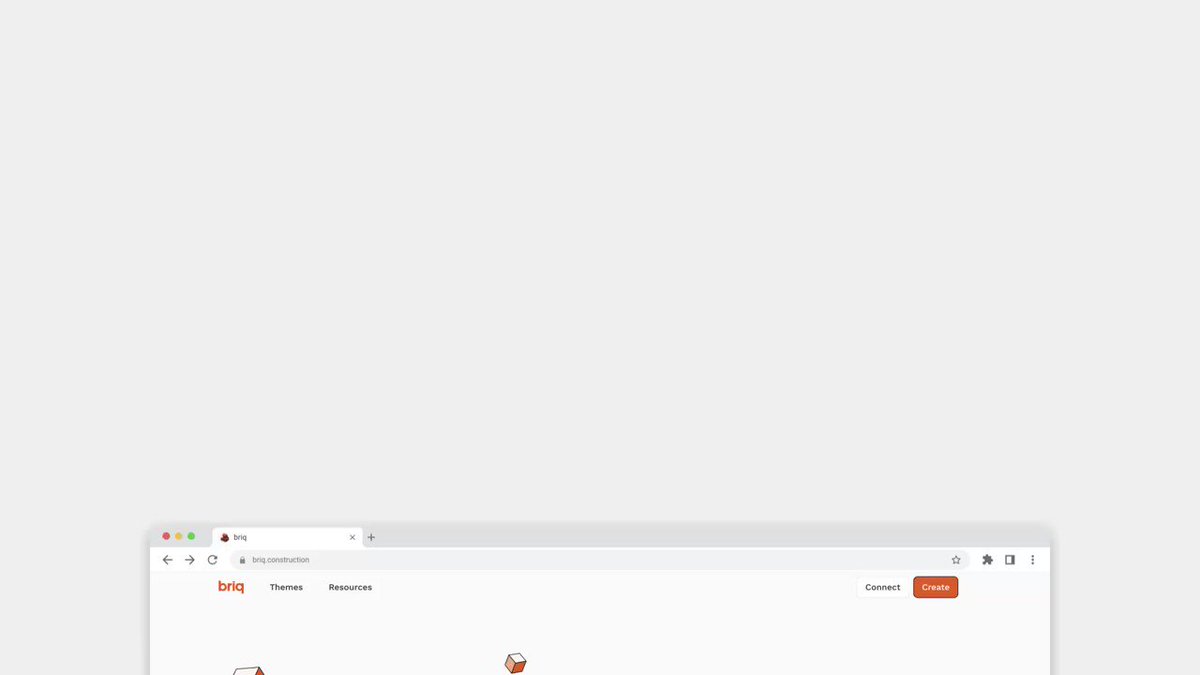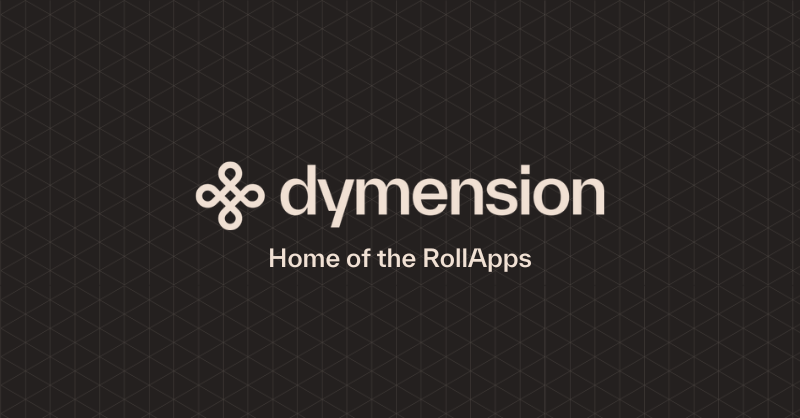Weekly Rollup #1
For the week ending February 10th
Welcome to Modular Media, a weekly newsletter covering news, updates, educational content, and more within the modular ecosystem.
Subscribe to get issues sent directly to your email every Tuesday, and also, make sure to follow us on Twitter for daily modular updates!
News and Announcements
StarkWare Sessions Recap
As you may have already heard from everyone in your Twitter feed, this past weekend was StarkWare Sessions, a two-day conference dedicated to the StarkWare, StarkNet, and the entire Ethereum community. The meet up took place in Tel-Aviv, and featured several amazing panel speakers, including Eli Ben-Sasson and Uri Kolodny, the two StarkWare founders, Bobbin Threadbare and Jordi Baylina from Polygon zk team, Stani from Aave, and many others.
Here are some of the main highlights and announcements from the event:
Kasar Labs introduces Starknode
Kasar Labs just announced the launch of a plug’n’play StarkNet full node. If you know how to plug in a cord, you can start contributing to the network from your own home. Limited pre-orders open soon!
Bravos Wallet Adds a 3FA Layer to its Security Pyramid
In short, the pyramid consists of five levels of security, and with the new 3FA Multi Signer Feature, transactions can only go through if signed from two devices (browser extension & mobile app). On top of this, the Multi SIgner also leverages BioID approval (lke faceID from your phone). Check out the original thread to learn how to activate these new features.
Chainlink Oracles Arrive to StarkNet
During the conference, StarkNet was announced as the next chain to be added to the Chainlink SCALE program, meaning StarkNet developers will now be able to access the leading oracle network’s services. Chainlink data feeds are already live on testnet, and expected to launch on mainnet soon. Here’s the official announcement for more details.
Argent Announces Argent Web Wallet
Typically, when we want to open a crypto wallet, we have to download an extension/app and write down our own seed phrase. However with Argent’s new feature, we can open a wallet in just a few clicks, by simply entering our e-mail address - a new way to onboard users onto the ecosystem. Oh, and it’s non-custodial. Just as with Braavos, Argent is showing the power of Account Abstraction.
Reddio Announces Updated Dashboard with new L2 Functionalities
“This new dashboard offers a wealth of features and tools to help developers quickly mint NFTs, deposit ERC20s, create in-app marketplace and more on layer 2.”
For anyone interested, you can catch the full live recordings from the event here.
100 Flash Layers
In preparation for the upcoming launch of AltLayer’s no code rollup dashboard solution, the team just announced their “100 Flash Layers” campaign, where 100 selected users will be able to deploy their own custom, disposable rollup “in 10 minutes”.
For anyone new to the project, AltLayer is building a system of disposable, optimistic rollups, or as they refer to them, “Flash Layers”. Using their dashboard, users will be able to deploy their own custom, no-code rollup in just minutes! They currently support rollups on Ethereum and other EVM chains but will expand to other environments in the future.
Let’s use web3 gaming as an example. If I wanted to launch my own mini-game during the Superbowl using Reddit avatars, I would be able to do so in just a few clicks using AltLayer (as long as I have the actual game built already of course). Rather than competing for block space with all the other dapps on L1, this game would have its own dedicated rollup, allowing users to experience low gas costs, and higher speeds compared to the L1. And considering these are disposable rollups, I’d be able to set it so that once the Superbowl ends, so does my rollup. This is done thanks to the “end of life” feature they have implemented.
Another use case would be NFTs. I can launch my collection on its own rollup (a Flash Layer), get away from L1 congestion, and then dispose of the rollup once the collection sells out.
As mentioned, 100 selected users will be amongst the first to test this new no-code rollup solution. So whether you’re a developer, enthusiast, or VC, you have until February 28th to apply! Those who get chosen will take part in the testing campaign, which will run from March 2-10.
Make sure to check out the complete article for more details if you’re interested in applying.
Arbitrum Announces Stylus
For all you Arbitrum developers out there, this past week Arbitrum announced Stylus, “Arbitrum’s next gen programming environment”.
So what exactly is this?
As most of us are aware by now, Ethereum as it is today cannot scale. However, luckily for us, there are tons of projects working to solve this issue. One of these projects is Arbitrum, an L2 blockchain that enables users to take part in the Ethereum ecosystem, without having to pay high gas fees or go through long transaction times.
Ethereum is based on the EVM, which requires programmers to write their contracts in Solidity, and so as you may imagine, this requires some learning. While Arbitrum is committed to always remaining EVM equivalent, Stylus represents a new step forward, one that goes beyond the EVM. They call it, “EVM+”.
What Stylus does is allow developers to start writing their smart contracts in a language that’s more familiar to them, whether that’s Rust, C, or C++. This means Solidity and Rust (or whatever language you choose) smart contracts will now live side by side on Arbitrum, and best of all is that they’ll be interoperable with one another.
Not only that, but Stylus will also bring a 10x performance boost, which adds to the 10x performance boost that was just added with the launch of Arbitrum Nitro this past August. Aside from all this, Stylus “users will be able to create their own precompiles”.
For anyone wanting to learn more about everything Stylus has to offer, feel free to check out the official article.
Ticking Optimism
Last week, @therrealbytes presented a proof of concept implementation of a “ticking blockchain” built on top of Optimism Bedrock.
In short, a ticking blockchain enables certain predefined conditions to be triggered automatically after a certain period of time, rather than having to call on these conditions manually. Take a web3 game for example.
As presented in the article, there are two ways to have an NPC move around in a game:
Lazy updating: NPCs are constantly moving, but positions only updated when the user sends a transaction
Manual ticking: NPCs position is updated after a certain period of time based on set preconditions.
Essentially, a ticking blockchain just automates the latter option.
While automated ticking comes with some downsides, here are some of the benefits listed:
State is always on-chain & up to date
Logic implemented in the chain, not the client
Simpler code audits
Users don’t pay for update costs
Highly recommend any Optimism fan to check out the original article, linked here.
Constellation Rebrands & Launches 1-Click Rollup Solution
The project’s previous name, “Constellation”, reflected their mission to build a constellation of blockchains unified by Ethereum. However, according to the team, with so many brand names involving “Constellation” (Constellation Network, Constellation Brands, etc.), they figured it was time to switch things up, and thus, Caldera was born.
According to the team, “like the natural phenomenon — each Caldera Chain is unique, molded by each project’s specific design requirements and goals”.
Of course, as the team makes clear in the article, “Although our name has changed, our goals remain the same: empowering developers to build apps in Web3 by making it easy for anyone to launch performant, customizable layer-two blockchains”.
For anyone unaware, Caldera enables developers to build their application on its own dedicated, custom rollup “in 5 minutes''. As of today, Caldera is already up and running on both Ethereum and Polygon, in case you’re interested in trying it out.
Also, you can catch a sneak peak of how the dashboard will look in the article, linked here.
Dymension Announces $6.7M Raise
Last Thursday, Dymension announced their $6.7M raise, led by Big Brains Holdings, Stratos, and several others. The funds will be used to continue building their network of easily deployable RollApps.
They’ll be launching on February 15th, and for anyone interested, you can check out our newsletter from last week to find out how you can prepare for that upcoming launch.
Hyperlane Releases MVP
Hyperlane is a modular interoperability protocol, and on February 9th, their much anticipated MVP was released.
As @AsaOines puts it, Hyperlane is building “security legos”.
The problem they’re solving is that current interoperability protocols (for security reasons) tend to gatekeep. For example, developers have to rely on bridging protocols to deploy on their chain, as well as needing to have their tokens whitelisted before they can deployed on a certain chain. Although this process is to ensure a certain level of security, we need a better way, and this is what Hyperlane is trying to do with their permissionless interoperability protocol.
Hyperlane hopes to enable any blockchain, app, or rollup to add interoperability functionalities to their platform at any time, without having to ask permission from anyone.
Hyperlane’s modular design enables the following features:
Permissionless deployment: “there’s no need to rely on the team to bring you interoperability anymore, Hyperlane is opening up the interchain highway.”
Sovereign consensus: leverage Hyperlane’s security modules to customize your own chains security model - put the security legos to work!
Warp Routes: “Wrap and move any asset to any Hyperlane-supported chain permissionlessly.”
Hyperlane’s proof of concept with Celestia was just launched on testnet, meaning developers can start experimenting and launch their own rollup solution on Celestia today, with built in interoperability from day one.
For anyone interested in learning more, please check out the original article.
Other News & Updates
For anyone attending EthDenver, Fuel Lasb will be hosting L2 Day, featuring guests from some of the top projects in the space, including Arbitrum, Aztec, Scroll, and others.
Sway v0.34.0 is now out, with new features and improved compiler performance. Check out the thread to learn more.
Swaylend, Fuel Labs’ first lending protocol, is now live on testnet.
For anyone looking for a job in the modular ecosystem, Fuel Labs is now hiring for a developer relations engineer position.
Here’s a really good thread comparing user numbers from across the different social apps launched on Polygon, such as Galxe & Lens.
Check out Polygon’s new, revamped website.
Squid, a swap protocol launched on Axelar’s communication network, just integrated the Polygon network onto the platform, connecting Polygon to 24 other chains.
Introducing IDriss Send, allowing people to send crypto/NFTs to each other using phone number, email, or Twitter username
Pocket Universe launches on Polygon, a browser extension that provides users with extra security & assurance whenever they sign a transaction.
Over 1M Reddit Avatars were minted in 4 days - a new record! This high activity was due to a free Superbowl Reddit Avatar users were able to mint.
Nostra Finance, “the liquidity layer of StarkNet”, releases their Nostra Money Market Alpha analytics dashboard to the public. Check out TVL, debt markets, utilization rates, and more.
Attention StarkNet users, make sure to upgrade your wallets so you don’t lose your funds!
Three Sigma open sources StarkEx SDKs
zkSync completes regenesis of their 2.0 testnet. The regenesis introduced changes to account abstraction, SDKs, and L1 contracts.
zkSync announced some of the added security measures the network will take for 2.0 release, including: limiting the early flow of funds, and a restriction of withdrawals.
“Railgun is now live on Arbitrum’s Goerli testnet with a proposal for full deployment up for voting on the governance forum”. Full deployment is expected to come today.
Silo Finance launches on Arbitrum, giving users access to risk-isolated money markets on Ethereum.
Bluefin (formerly FireFly), which is a decentralized perpetuasl protocol, is now live on Arbitrum. Their Beta release is for only a subset of selected users, with a full public launch expected later in the month.
JPEGz, a total NFT market cap token created by Cryptex Finance, is now on Arbitrum
Avault is now live on Arbitrum, allowing users to interact with Arbitrum dapps without having to switch networks. Avault is the first omnichain yield platform on the market, powered by Layer Zero, the interoperability protocol.
Attention devs, Nitro Upgrade v2.0.11 is here. It’s an optional, but recommended upgrade.
.arb domain pre-registrations are coming. Check out the article to learn how you can get a head start and grab your domain.
Check out the latest quarterly updates issue written by the Arbitrum Developers team to see a recap of what Arbitrum has achieved over this last quarter
OP airdrop #2 is here. You can check out the complete details and see if you’re eligible for the airdrop here. There is no claim so don't interact with any addresses to claim. Tokens will be airdropped to wallets directly!
RetroPGF Round 2 window closed. Check out if your project was nominated, as you’ll have to opt-in by Feb 21st (just fill a short form). Results will be announced in late March.
Shapella upgrade on the horizon. For anyone with questions about Eth staking withdrawals
EF publishes their first Grantee Roundup of the year, Check out what the grantees have built over the past couple of months
Eigen Layer: Shared security summit at EthDenver
Governance proposal for Turkey relief is now up for voting
“What 2023 has in store for the interchain”
Looking for a job in the modular ecosystem?
Discussions and Education
zkEVM Proving Efficiency
Eduardo (DAppNode co-founder and Polygon zkEVM core dev) releases prover efficiency benchmarks for Polygon zkEVM - and impressive would be an understatement. Proving time and cost have historically been the biggest arguments against ZK systems, but those arguments are getting harder to make.
As you’d expect, reactions followed from rollup wizards:
Polynya (anon researcher) alludes to how unclear it was that ZK prover efficiency would progress this fast and how the time-to-market advantage for optimistic rollups might be fading
Alex from zkSync alludes to comparable performance for zkSync proof generation and explains why most rollup costs will actually come from transaction data publishing
Polynya emphasizes further how ZK rollups in validium mode can already compete on cost with optimistic rollup designs
Toghrul from Scroll makes a case for publishing transaction data over state diffs, despite costing more, due to increased security in certain cases
Rollup Honesty & Scrutiny
Polynya and Suzuha, two well respected anon researchers, express hope that rollup advocates hold themselves to the same standards as L1s they criticize for being insecure / centralized.
Reactions and general sentiment, even from rollup teams, is “fair point”. The reality is that many people evaluate rollups based on envisioned properties and not necessarily properties they have today.
We should make better use of rollup evaluation tools and frameworks such as L2Beat Risk Analysis and Vitalik’s rollup milestones framework. We should also push toward more tools and frameworks aimed at non-experts.
One notable discussion, sparked by Polynya’s tweet, is between Friederike from Gnosis and Toghrul from Scroll:
Friederike states that L2 bridges are not more secure than ZK light client bridges to separate L1s, citing Gnosis chain as an example with 110k mostly home staking validators
Toghrul points out that light client bridges, even using ZK proofs, are not trustless and have fundamentally different trust assumptions than rollup bridges
The main takeaway is that even though ZK light client bridges are exciting, they are unable to achieve the same properties as validating bridges.
Bitcoin as a DA Layer
Ansgar (Ethereum researcher) shines a light on how Bitcoin has the ability to support sovereign rollups and how it has beaten Ethereum to blobspace (without really meaning to). Ethereum will ship blobspace in several months with EIP-4844, giving it 3x the data throughput of Bitcoin - not all that much!
“But I thought Bitcoin wasn’t a good DA layer?”
If you were under this impression, you weren't alone. You also weren’t wrong - Bitcoin wasn’t well suited for rollup DA until two upgrades that raised the theoretical block size limit and removed the transaction size limit.
“Can it also be a good settlement layer?”
Not in its current form. Ansgar clarifies that Bitcoin would need to change its feature set, likely requiring a significant cultural shift over time since they are anti-hard fork.
Other Discussion & Education Posts:
@jon_charb frames PoS blockchains via corporate analogy
@0xRainandCoffee writes an article explaining “Modular MEV” in depth
@pseudotheos categories ZK rollups in a helpful way
@0xkhan_ explains zkEVM in depth
@theempirepod releases a podcast episode discussing sovereign blockchains with @sunnya97 and @dberenzon
@camiinthisthang hosts a Twitter Space on building cross-chain applications with
@0xSalazar curates beginner friendly ZK resources
@nickwh8te explains why modularity enables both protocols and apps to capture optimal value
@nosleepjon explains how permissionless interoperability empowers cross-chain bridging
@JesseT2605 hosts a Twitter Space discussing modularity and Celestia with @nickwh8te
Celestia explains data availability
@imperator_co explains Polygon Supernets and how Saga facilitates them
@arjunbhuptani conveys a hard stance on canonical bridges
@0xresearch releases a podcast episode discussing the Ethereum roadmap with @WestieCapital
@uF4No hosts a “Introduction to L2s” workshop
Ethereum Foundation creates a new website page to answer staking withdrawal questions
@rainyreece_ explains why Polygon can disrupt the ticketing industry
@smpalladino writes an article on using ZK proofs from a developer’s standpoint
@toghrulmaharram explains why Ethereum requires 32 ETH per validator
@shaolin_flow explains rollapp economics in simple terms
That's all for this week! Thanks for reading 🧱🎬





 616
616

 Account Abstraction Security Pyramid announcement
Account Abstraction Security Pyramid announcement On top of the Hardware Signer, we added the Multi-Signer (3FA)
On top of the Hardware Signer, we added the Multi-Signer (3FA)



 oracle sustainability
oracle sustainability







 Apply now:
Apply now: 

 Attn Devs:
Attn Devs:







 ) launching on Feb 15th. Join the community and take part in the future of Modular blockchains!
) launching on Feb 15th. Join the community and take part in the future of Modular blockchains!




 On a spot m6id.metal prover's cost: $0.064/proof ($0.0001/tx) The fastest ZK tech and the first production-ready zkEVM
On a spot m6id.metal prover's cost: $0.064/proof ($0.0001/tx) The fastest ZK tech and the first production-ready zkEVM The prover is no longer a bottleneck
The prover is no longer a bottleneck



